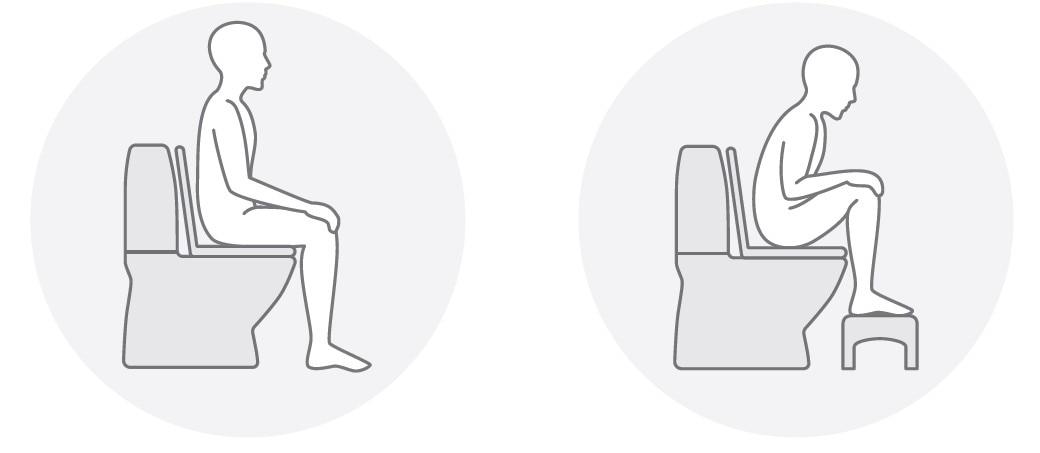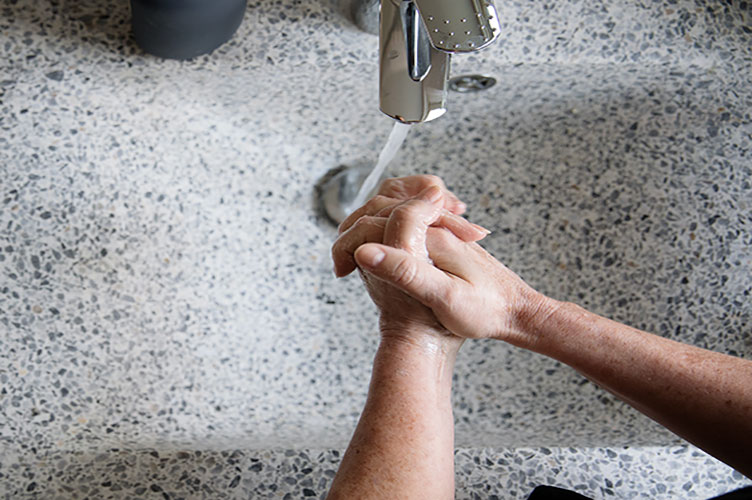
“I use a little potty stool where I put my legs up, because it opens the proper way for your body to evacuate” - David, Peristeen® user
David is a Peristeen with balloon catheter user (who received compensation from Coloplast to
provide this information). David has not used the new Peristeen® Plus Transanal Irrigation system.
What’s the best toilet position?
A good toilet position may be useful if you find it difficult to pass stool. There is no right or wrong way to sit on the toilet. It’s important that you find the position which makes it easy for you to insert the catheter and allows you to stay on the toilet for as long as it takes to carry out your Peristeen® Plus procedure.
Know that posture can affect your body and make it easier to empty your bowels. Evidence suggests that a squatting posture can help widen the anorectal angle even more, allowing a clearer and straighter passage for stools to pass through. (Squatting posture means that the knees are higher than the hips when seated.)

Getting into the right squatting position
The following pointers may help you get into a squatting posture and make emptying your bowels easier:
- Lean forward when you are sitting on the toilet with your hands resting on your thighs. Make sure that your knees are bent and are higher than your hips (it may help to use a footstool or ‘toilet stool’ if your toilet is high or you are not very tall). Other objects can be used as a toilet stool as well, like yoga blocks, wooden blocks, or sturdy shoe boxes.
- After feet are planted on the ground (or the footstool): Try to get into a comfortable position and relax, especially your abdomen (belly) and pelvic floor area. Avoid straining or holding your breath.
- Try to breathe to the bottom of your lungs with your mouth open to prevent straining and contracting your pelvic floor (diaphragmatic breathing).
- Gently massage the abdomen to help stimulate the bowel movement.
- Do not tighten your tummy.
- Relax your anal sphincter to open your bottom and let the stool out.
- Use your deep breath to increase the pressure in your abdomen and push down towards your anus.
- Try sitting on the toilet facing the tank and hugging it. This can help you stay steady, especially if you have a weaker back or less trunk control. It's sometimes safer to sit this way.


